How to Roast Coffee Beans at Home
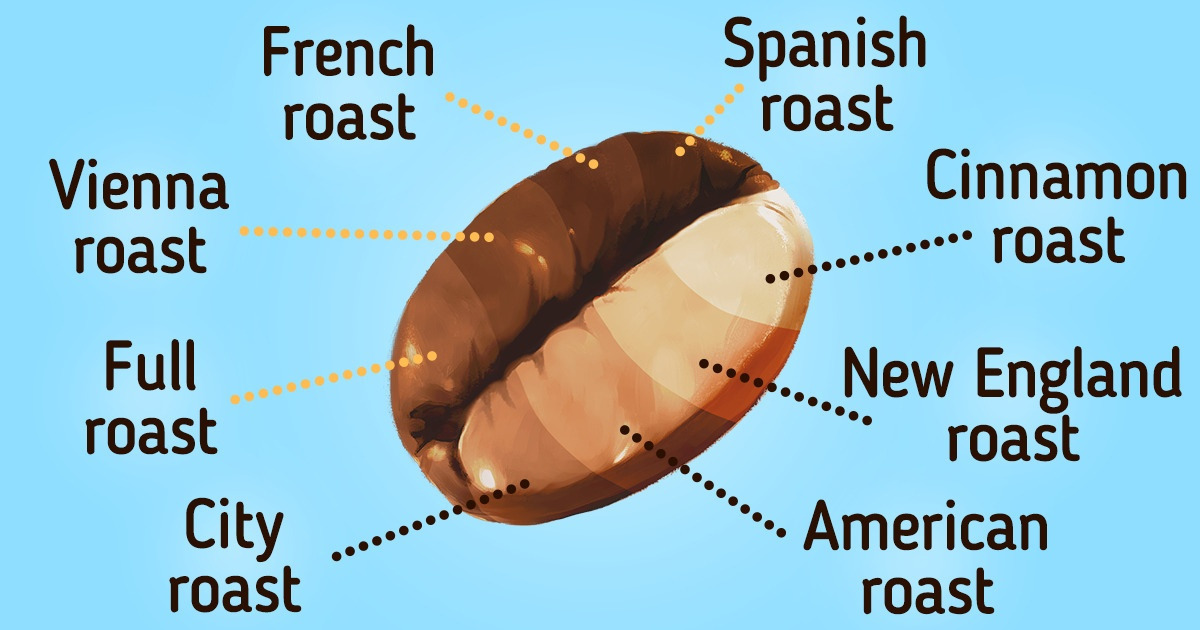
When you learn to roast your coffee beans at home, you know your coffee will be fresh, the level of roasting will be just as you prefer and, thus, you have almost become a master in making your own perfect cup of coffee. To help you achieve this, 5-Minute Crafts is offering you a guide to different methods of roasting your own coffee at home.
1. Pros and cons of roasting at home

There are several reasons why you should roast your own coffee. Let’s take a look at a handful of them:
➕ The process is interesting, especially for DIY lovers.
➕ You’ll have your own freshly roasted coffee any time.
➕ You can create the perfect gift for your family and friends.
➕ You can even sell it commercially if you’d like.
➕ You can save money.
However, there are some cons as well:
➖ The process requires a time investment that depends on the method you choose.
➖ There will be waste that you need to know about beforehand.
➖ You will need to go through a learning curve to figure out all the parts of the process and get used to it.
2. What you’ll need

Here is what you will need in the process of roasting your own green coffee beans:
1. Green coffee. The best idea would be to ask your local roaster where to buy green coffee.
2. A roaster. The more expensive the roaster, the easier the process and the less time invested. However, this factor does not have to affect the quality of the result.
3. A technique that suits you. No matter what method you use, the process of roasting coffee basically works on the principle of manipulating 2 main elements: heat and airflow.
The technique you use depends on what kind of equipment you have at home and how much time and money you’re willing to invest in it. If you are just curious about roasting coffee, try roasting it in a pan or grill, otherwise, try a home coffee-roaster. For more info, check section 4.
3. The basics of roasting coffee beans
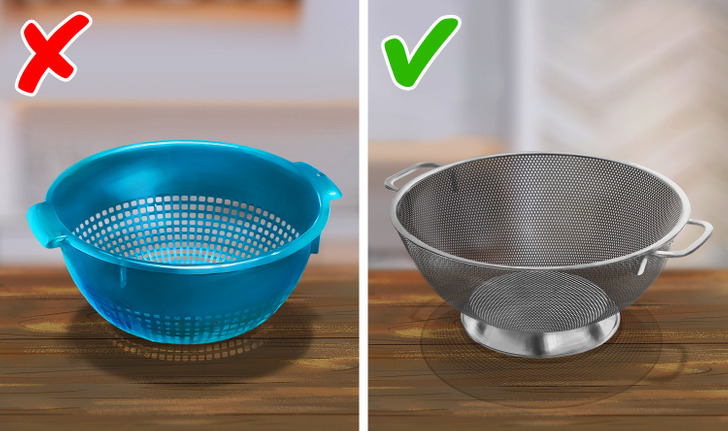
Here is what you need to know about the general steps in roasting coffee beans, regardless of the method you use.
1. The right temperature for roasting coffee beans is between 350°F and 500°F. It all depends on the method you prefer to use. It is important to make sure you stir the beans constantly, so that the heat distributes evenly. It can get quite smoky, so do your best to maximize the ventilation. Use heatproof mitts.
2. You will hear 2 distinctive cracks of the beans during the roasting process. The first one will happen after approximately 3 to 5 minutes and the second one after a few more minutes. It is recommended to remove the coffee from the heat about 30 seconds after the second crack.
3. The coffee beans need to cool down. Use 2 colanders (only metal ones). Shake and move the beans between them. This will make them cool down quickly. In case you don’t have colanders, transfer your roasted beans to baking paper to allow them to cool down.
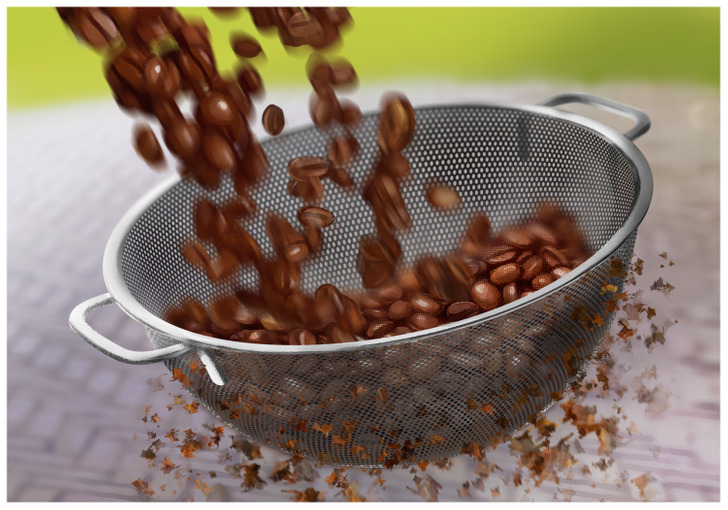
4. The dried husk, also called the chaff, has to be removed from the coffee beans after roasting. It is advisable to do that outside or in the sink, to avoid making mess, as the chaff is quite messy.
5. The beans need to de-gas right after roasting. This happens because the CO2 contributes to preserving the roasted beans by displacing oxygen. They release CO2 during the weeks to follow, which is why we need to let the initial CO2 escape before putting the beans in a container. Otherwise, they take on an unpleasant flavor and may damage the container. The perfect time to allot for de-gassing is around 12 hours, although opinions on this may differ.
6. The beans need to rest before grinding. Ideally, you should wait about 24 hours before you grind the beans and brew them. Keep them fresh in a sealed container and use within a week. After that, the oxidation takes its toll and the coffee beans turn stale.
4. Choosing the roasting method that suits you
A. Use a pan or a grill.
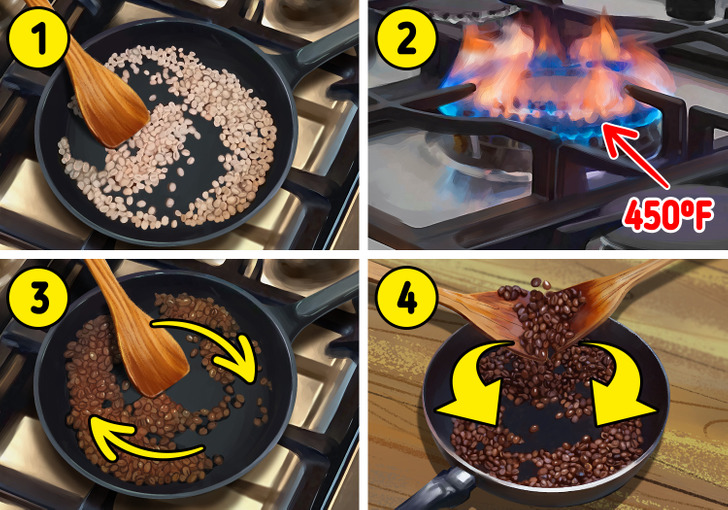
This is the cheapest way to roast your green coffee beans. Please pay attention to the following tricks that refer to this type of roasting.
- Put only one shallow layer of beans in a thick pan. The pan can be cast iron, steel, or uncoated. Do not use a non-stick or a coated one because it can ruin the flavor of the coffee.
- Use a gas stove or a grill, if possible. It allows you to control the temperature more easily. The temperature around 450ºF (about 230ºC) should be appropriate.
- Don’t stop stirring. You need even roasting.
- Stir and shake to cool down the beans as soon as possible.
❗ Please note that this is not the right method of roasting, if you want to achieve a French roast.
B. Roast your coffee in an oven
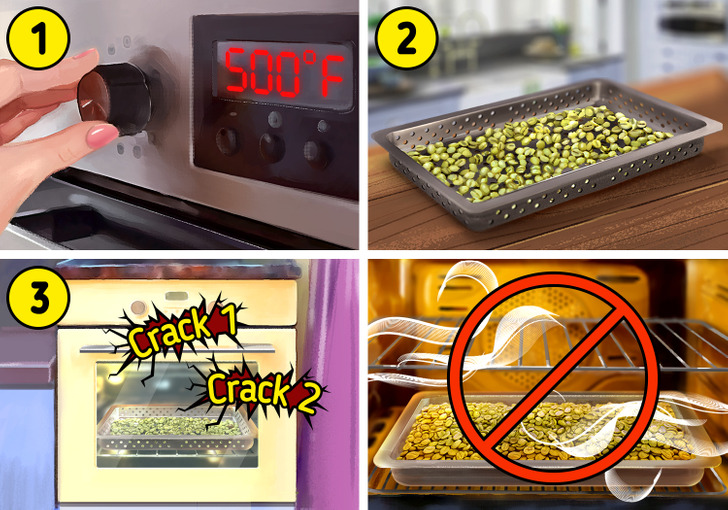
Using this method means slower roasting. It also means it will be harder to achieve the perfect roast. However, here are some tricks to take into consideration:
- Preheat your oven to 500ºF. This may differ depending on the oven, so experiment with lowering or increasing the heat a bit until you find the right temperature.
- Use a perforated tray and spread one layer of beans on it.
- Wait for about 60 seconds after the second crack to remove the medium-roasted beans from the heat.
⚠️ Bear in mind that you should not be using a convection oven, because the chaff will get really messy.
C. Use your popcorn popper to roast.
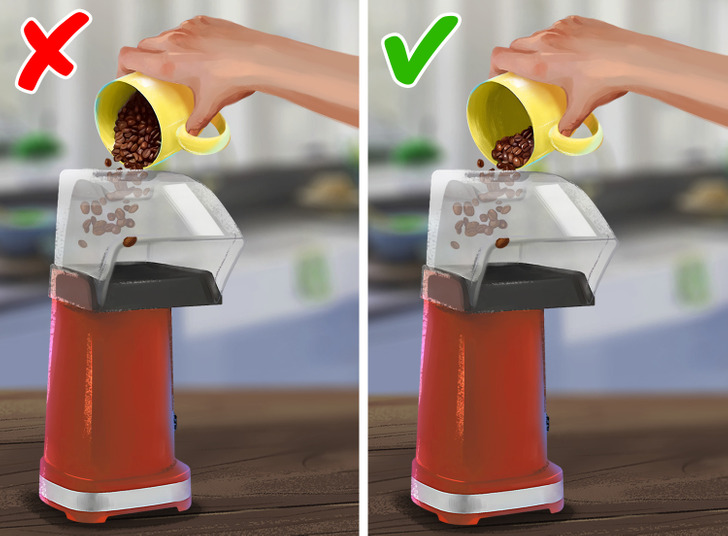
Beware that this device is not meant for coffee-roasting purposes so it could break any time. Here are some tips for this roasting method:
- Only use a popcorn popper with side heating. Otherwise, the beans might get burnt.
- Preheat your popcorn popper for about 30 seconds.
- Do not fill the machine too much. Put about half a cup of coffee beans because they will need enough space to rotate.
- Keep an eye on the agitation by using a wooden spatula to make the beans move consistently. Then put the lid on.
- Collect the dried husk that comes out of the popper’s spout to avoid making a huge mess.
D. Use a home coffee roaster

Although the process is usually automatized for the purpose-built coffee roasters, make sure you follow the instructions and monitor the entire process.
- Remember that ventilation is a must in this case as well, because roasting coffee always means having to deal with a lot of smoke.
- Pay attention to whether the machine offers its own cooling phase. In any case, your beans need to cool down fast.
5. Types of coffee bean roasts
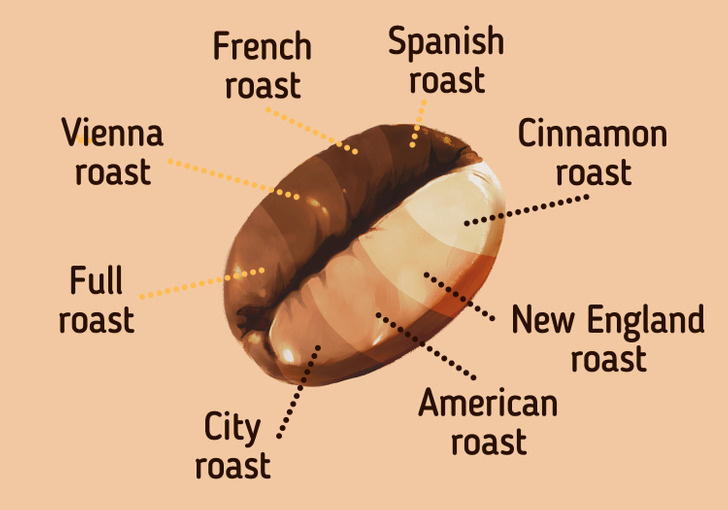
How long you roast your coffee beans matters a lot. It affects not only the flavor of coffee, but also its acidity, body, and aroma. The longer you roast, the darker your beans become. Also, the coffee will become more oily and longer heat pulls out more acidity. Here is some useful information on what to expect from 4 different coffee roasts.
- Light roast is the result of a shortened roasting process, which means this roast is the most acidic and contains more caffeine. The flavor has more citrus or fruity notes because of the higher level of acidity. It takes longer to properly extract, so you should brew it slowly.
Coffee made with lightly roasted beans is known as Cinnamon, New England, Half-City, Light City, or White Coffee.
- Medium roast coffee is considered the most balanced one in terms of acidity, flavor, and aroma. It is richer in body and you can sense a flavor that resembles chocolate or nuts. It also extracts faster than the light roast.
American coffee lovers prefer medium roasted coffee, which is why it is known as American roast. But people also call it City, Regular, Medium, or Breakfast.
- Medium-dark roast means a fuller flavor, more body, and a bittersweet aftertaste, like dark chocolate or dark roasted almonds. It also contains a lower level of acidity and a deeper aroma. It can appear somewhat oily on the surface.
The examples of coffee based on dark-medium roast are Viennese, After Dinner, Full City, Light Espresso, Light French, or Continental.
- Dark roast is the richest in flavor and extra bold body one. It is the most buttery coffee, as well, since you can actually see the oil on the surface of the beans, due to the longest roast. The dark roasted beans contain the least level of caffeine out of all types. This roast is particularly popular across Europe.
The most common types of dark roasted coffee are French, Dark French, Heavy, Italian, Spanish, Espresso, European, New Orleans, or Turkish.